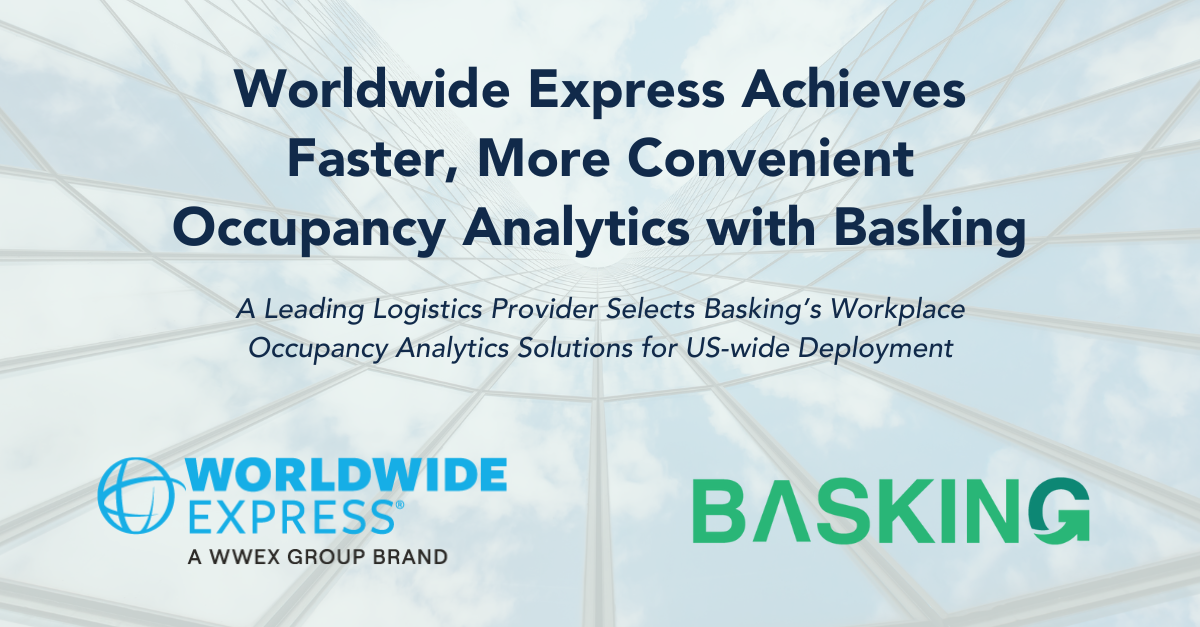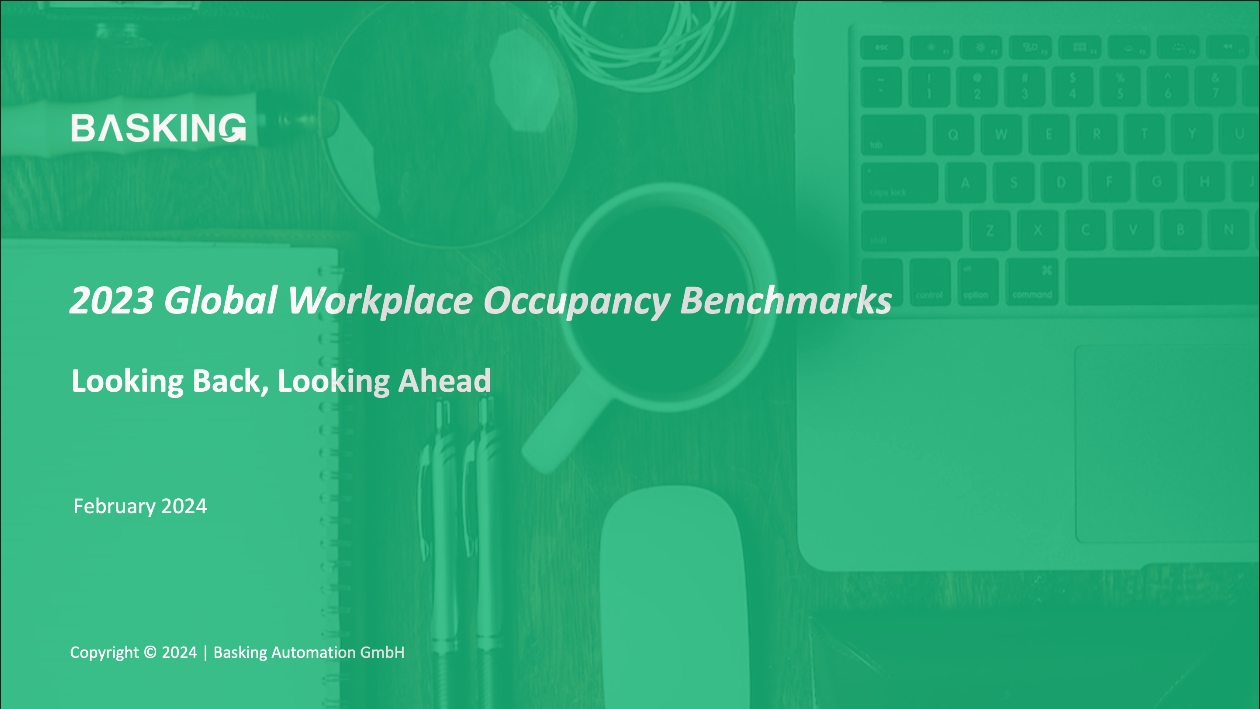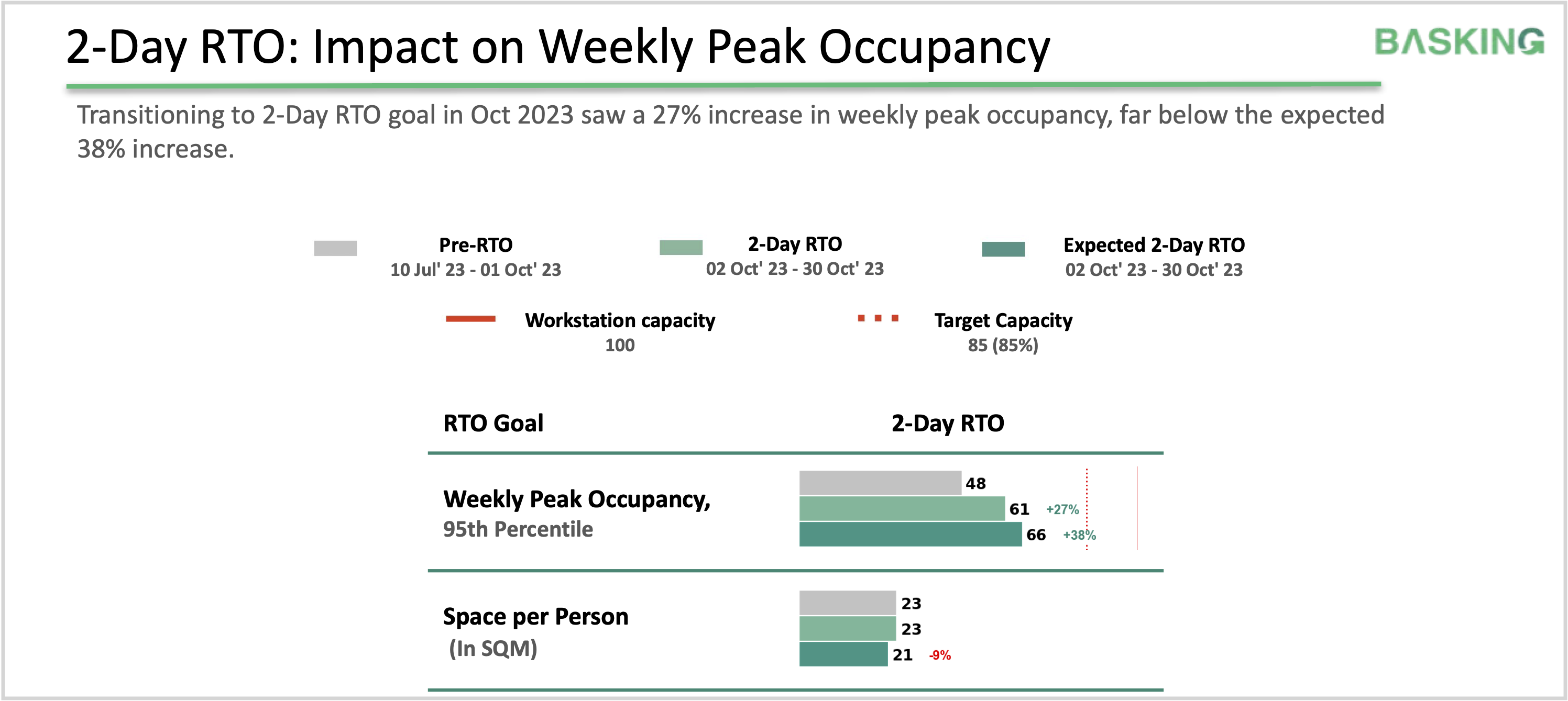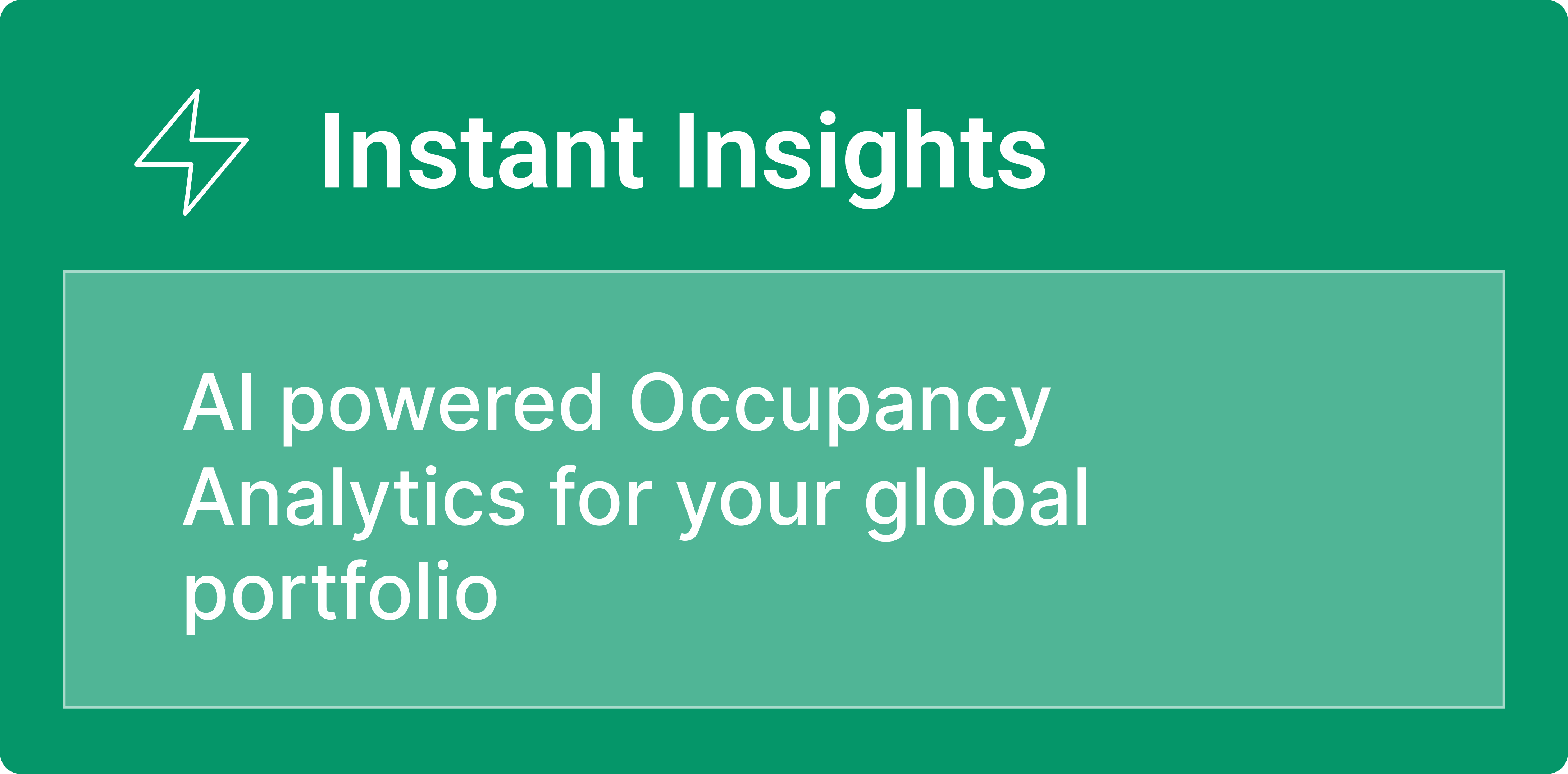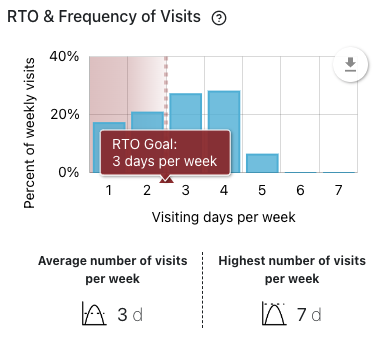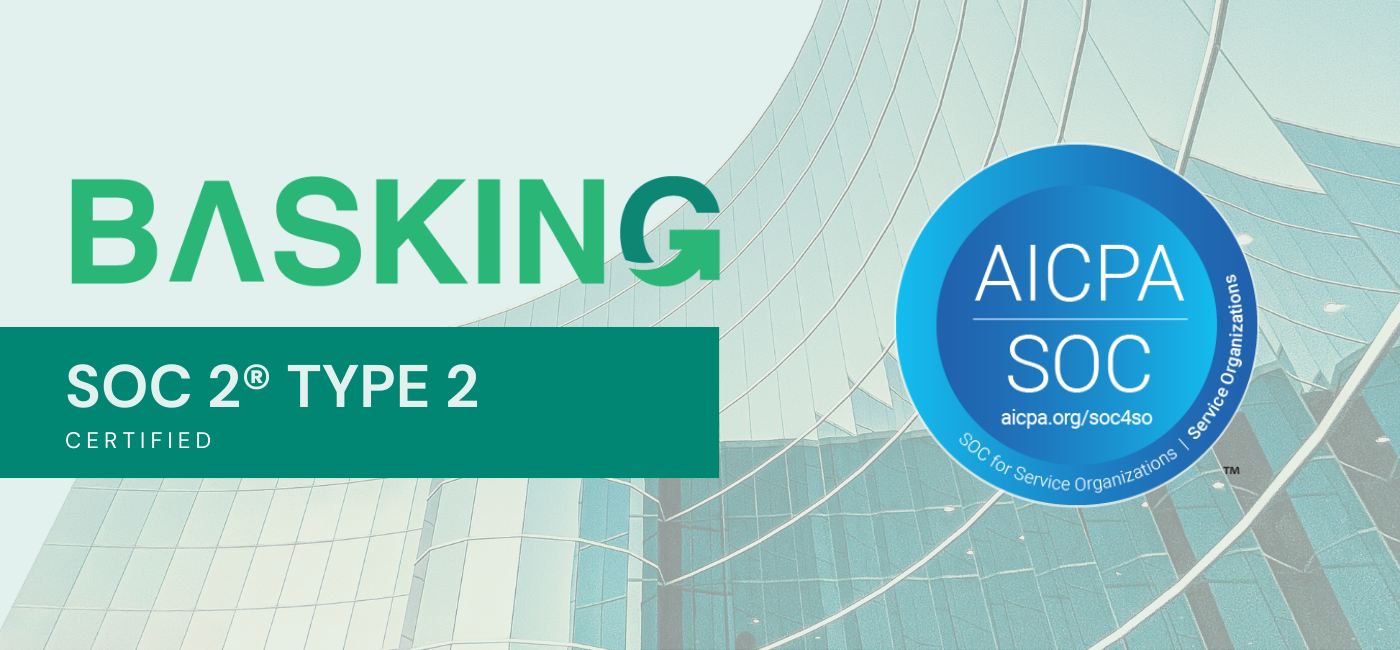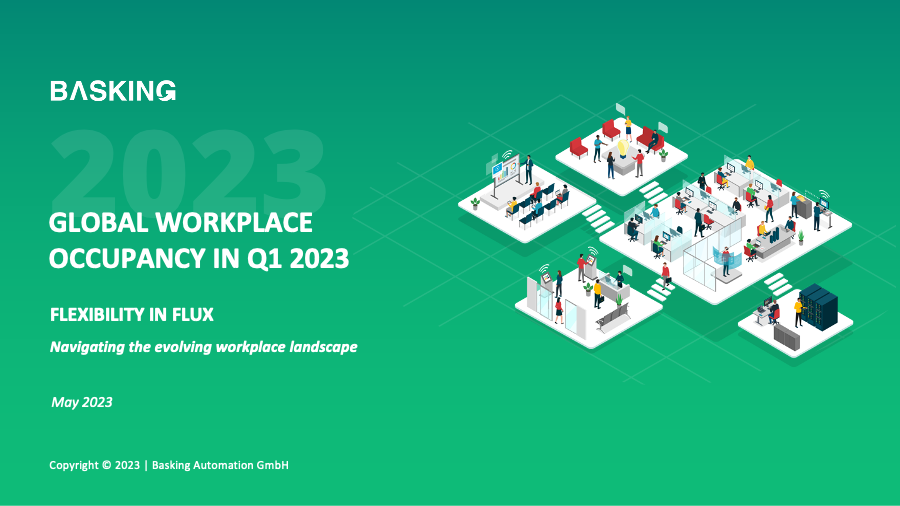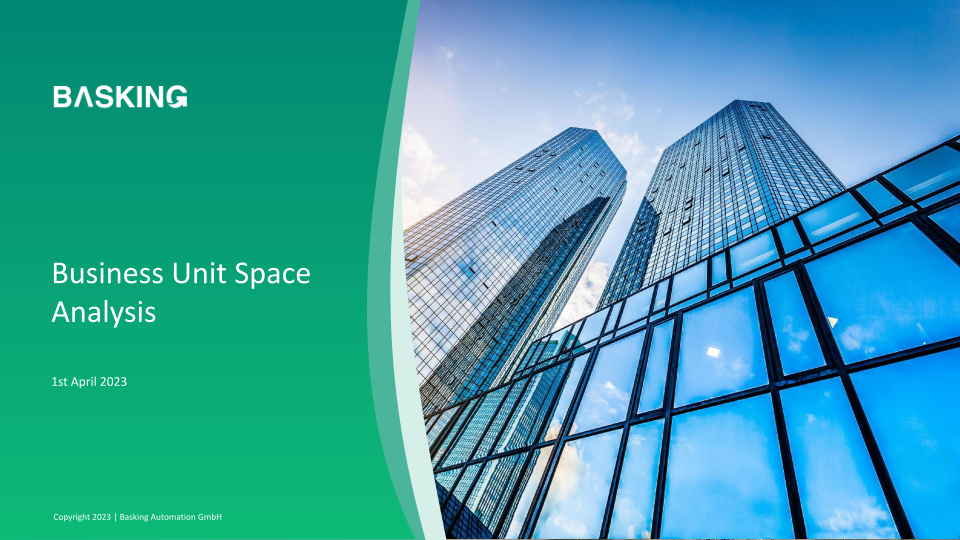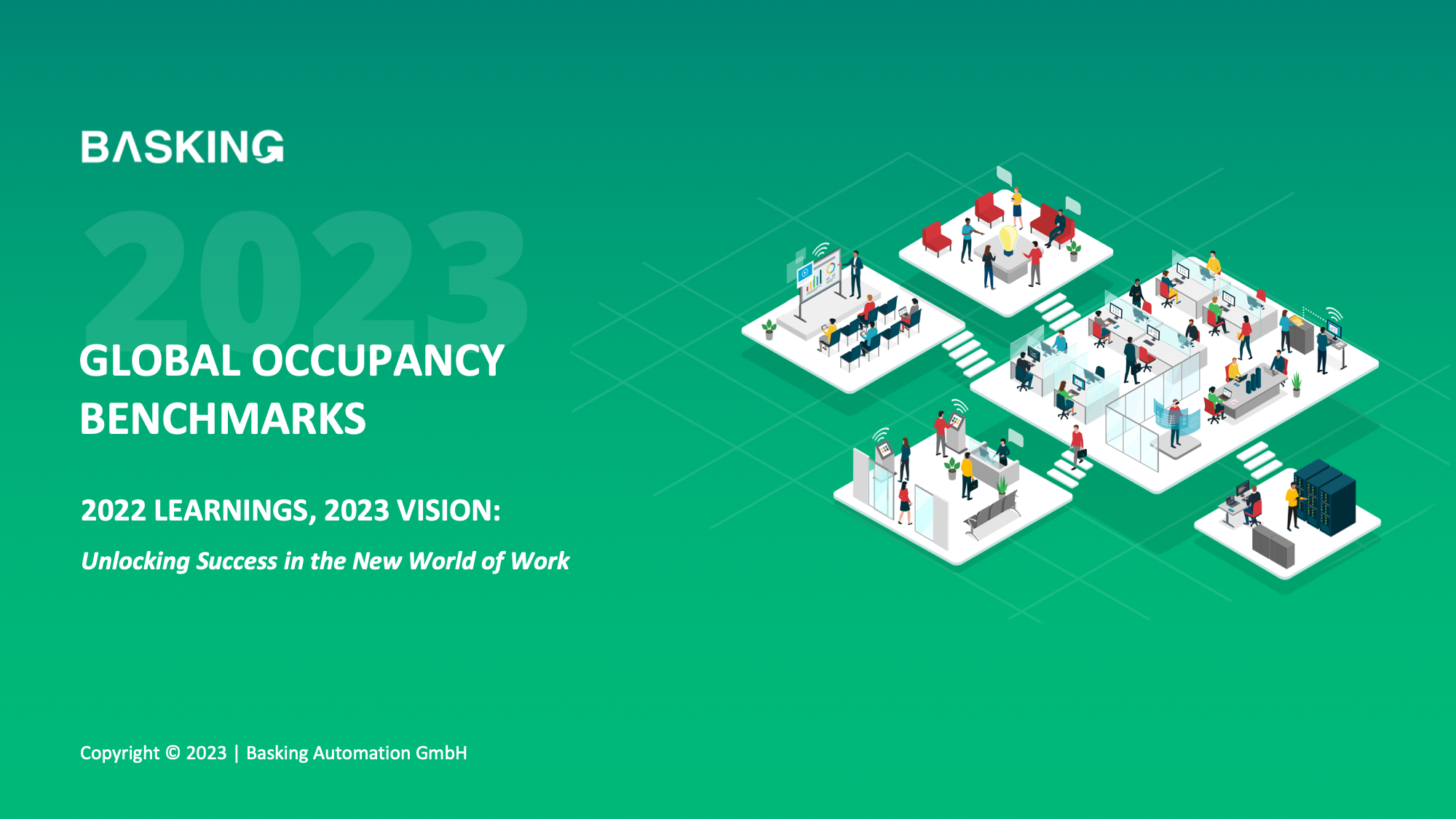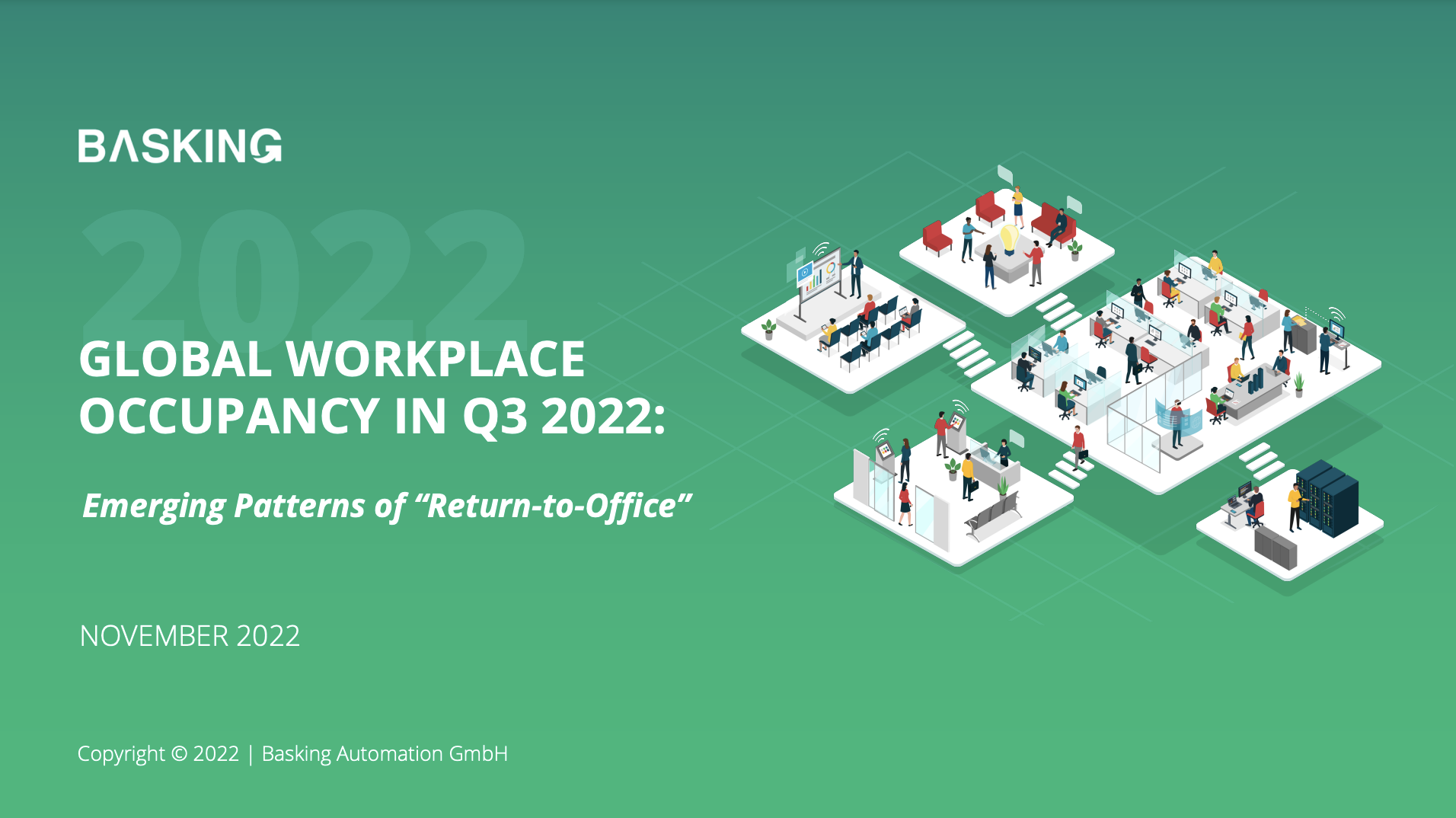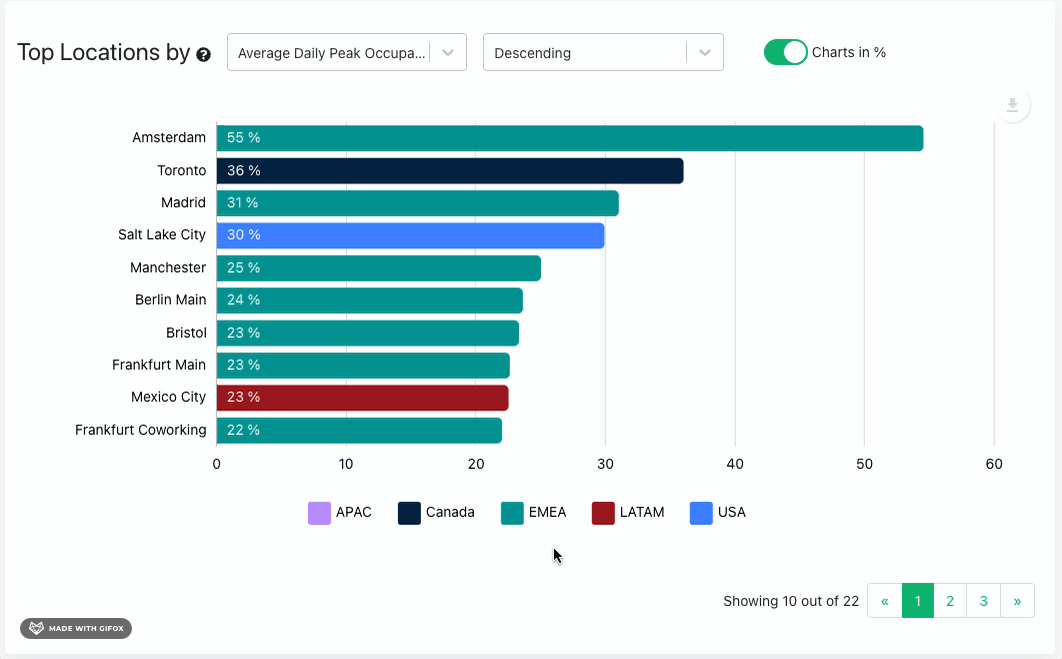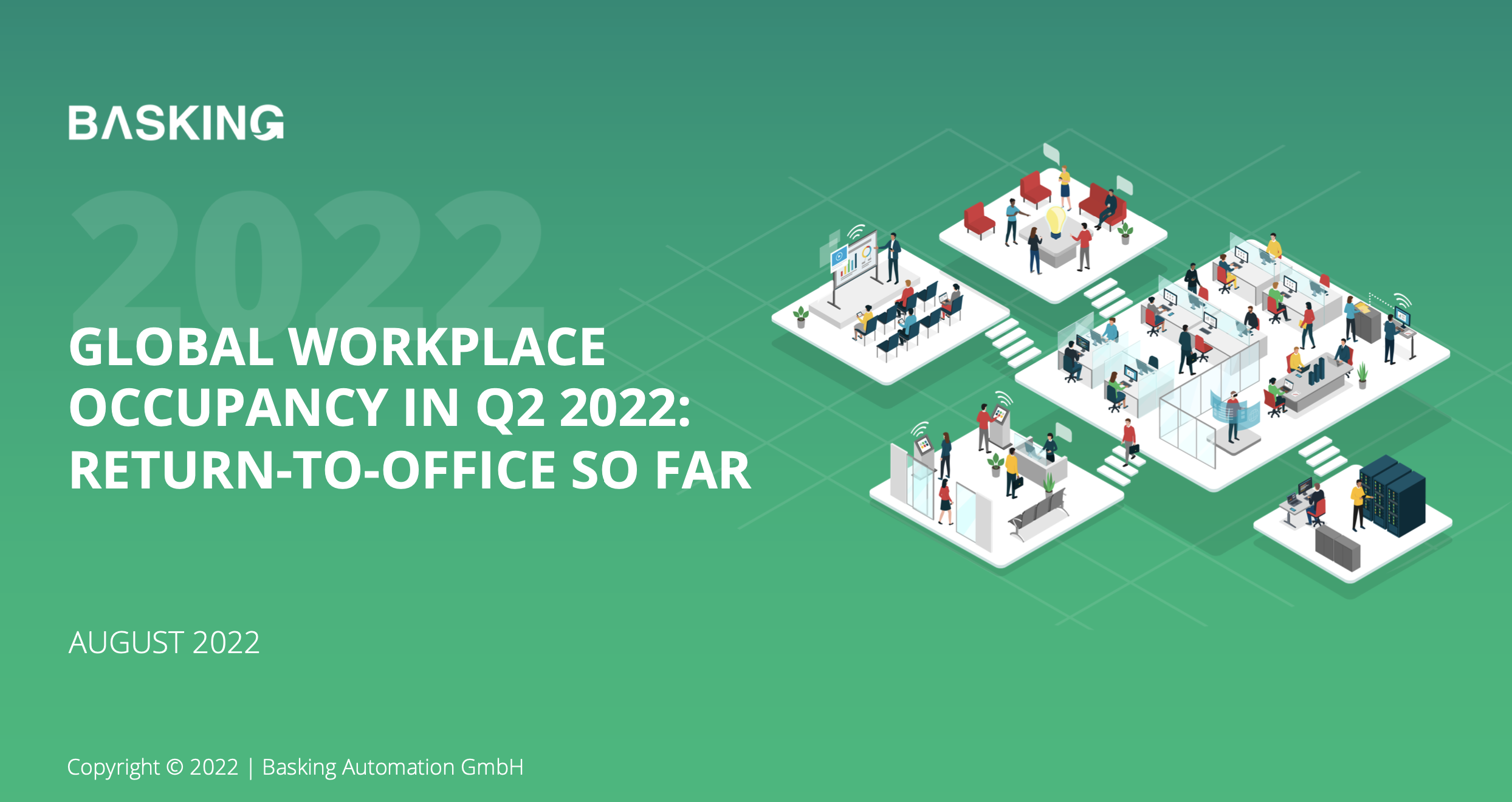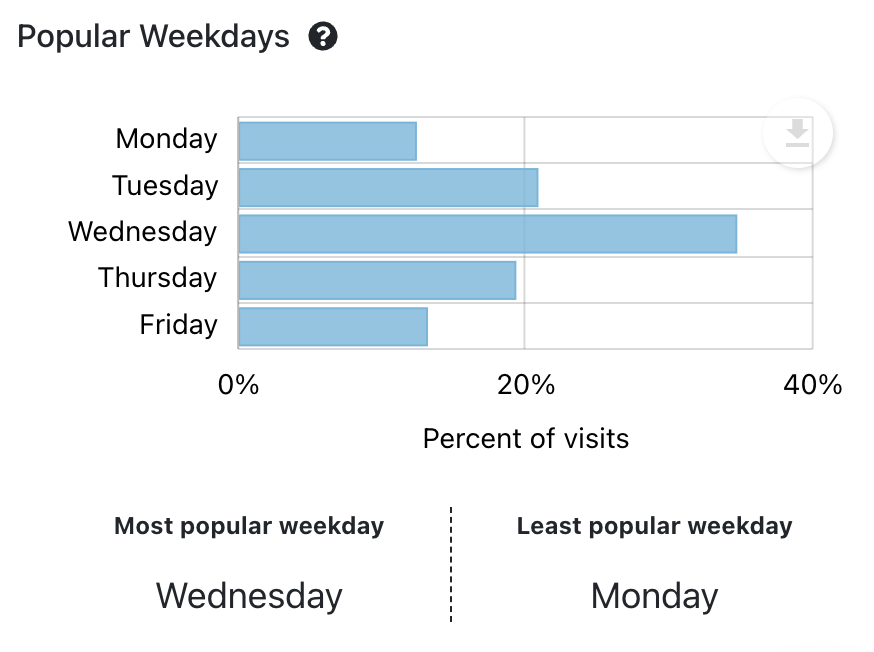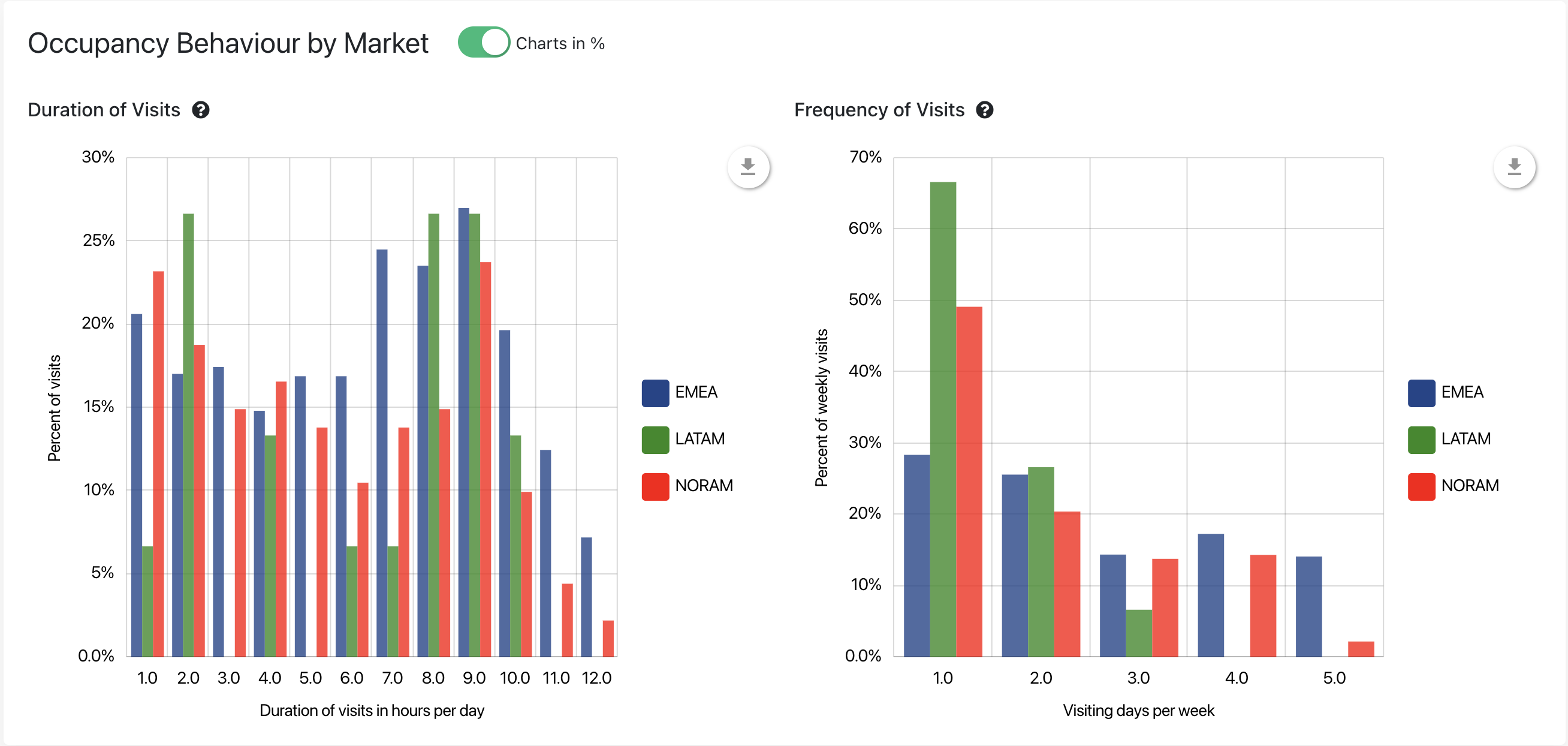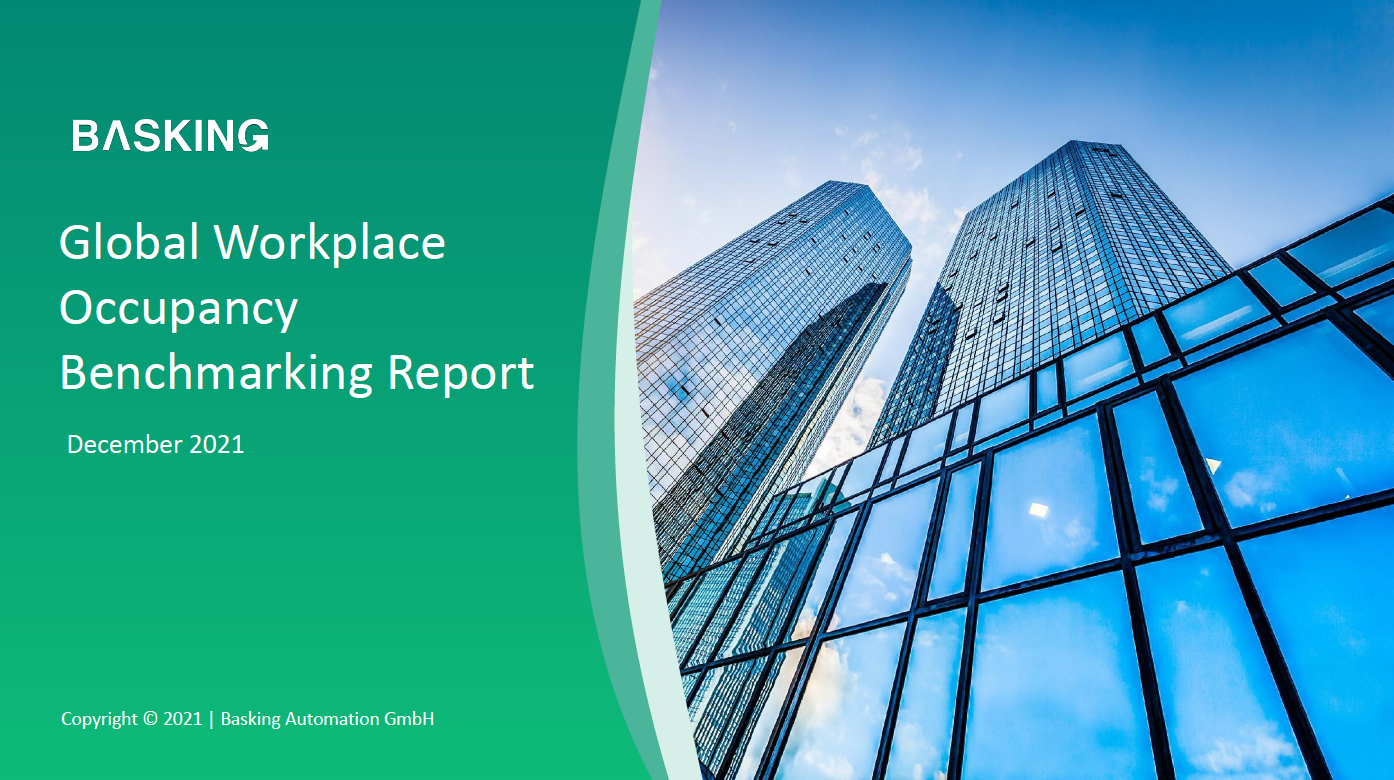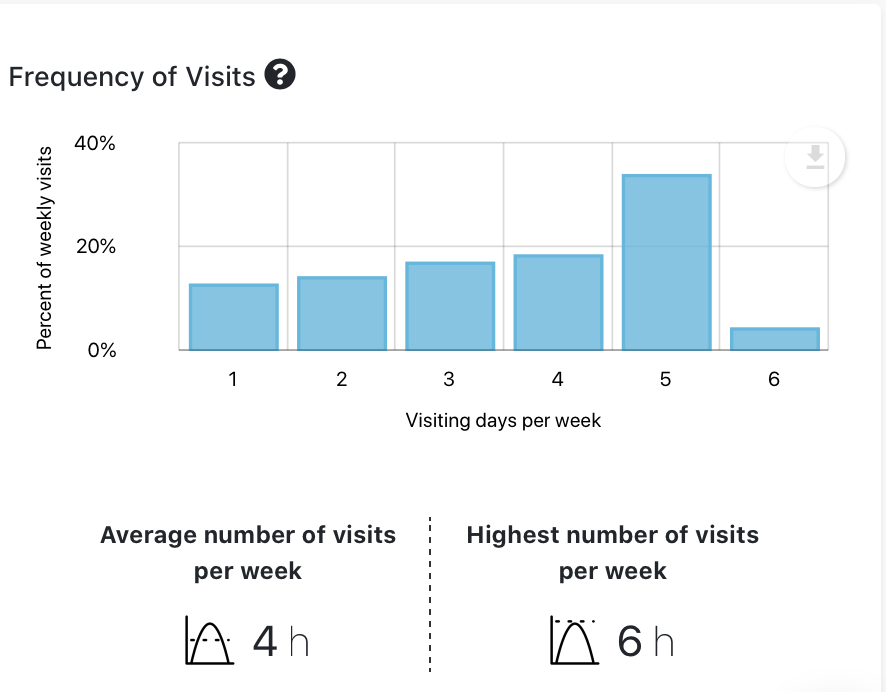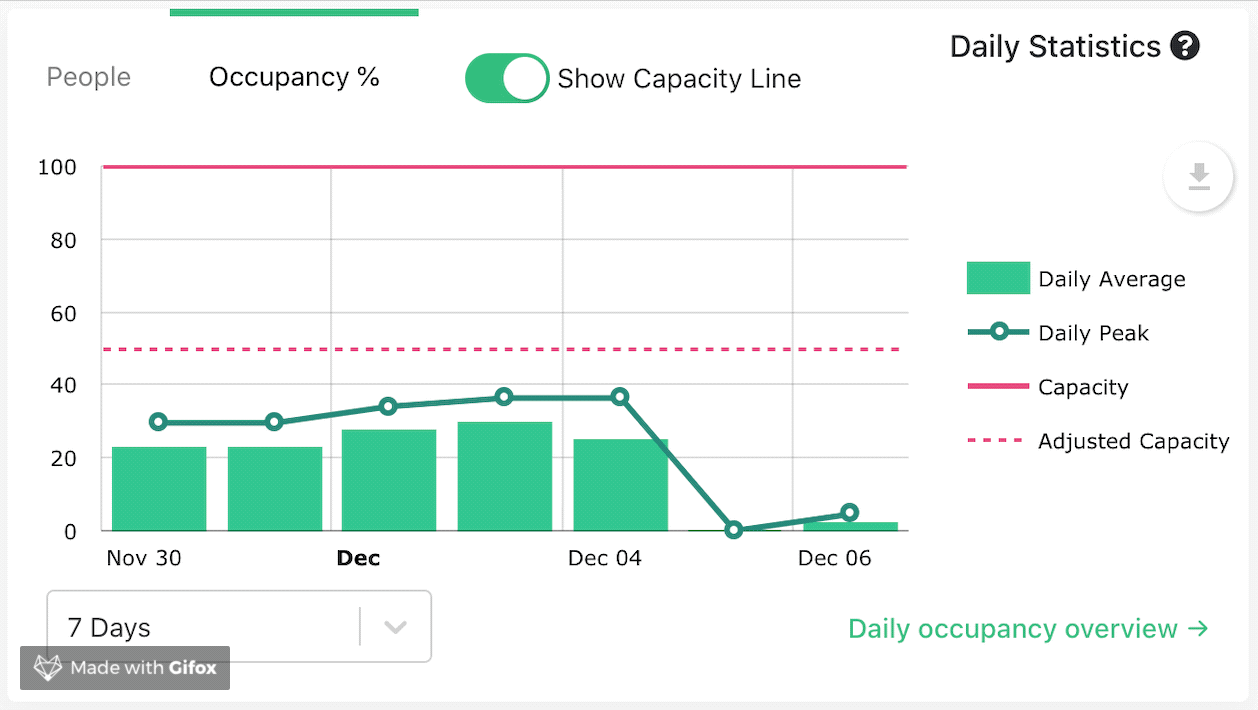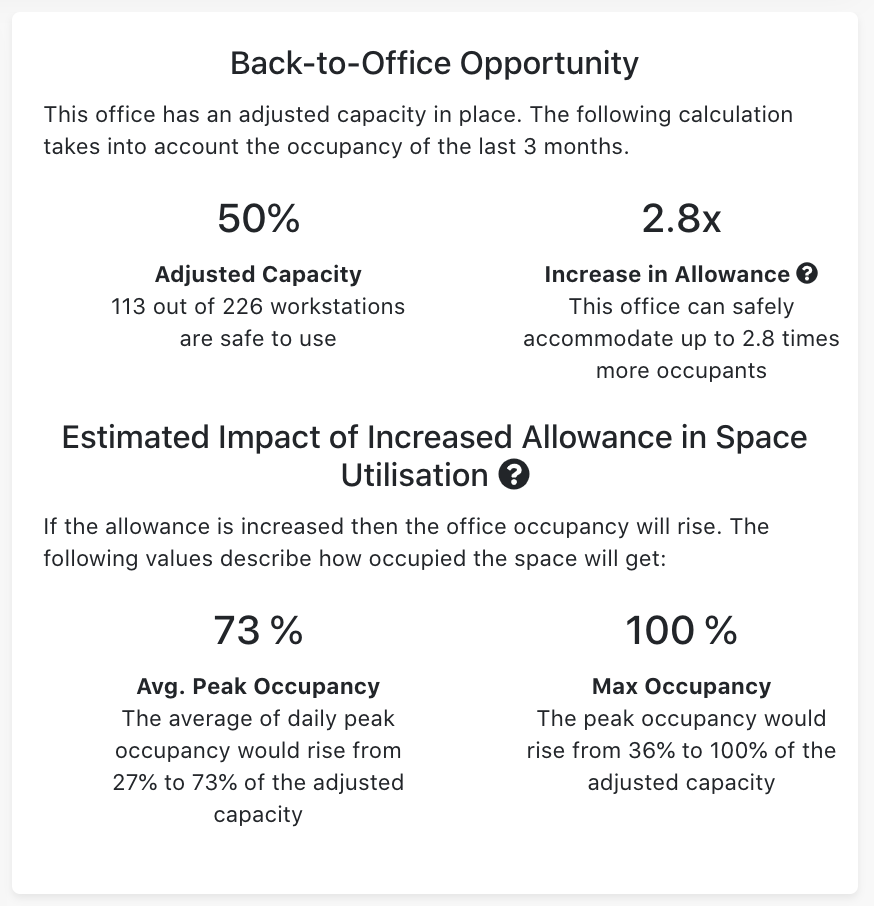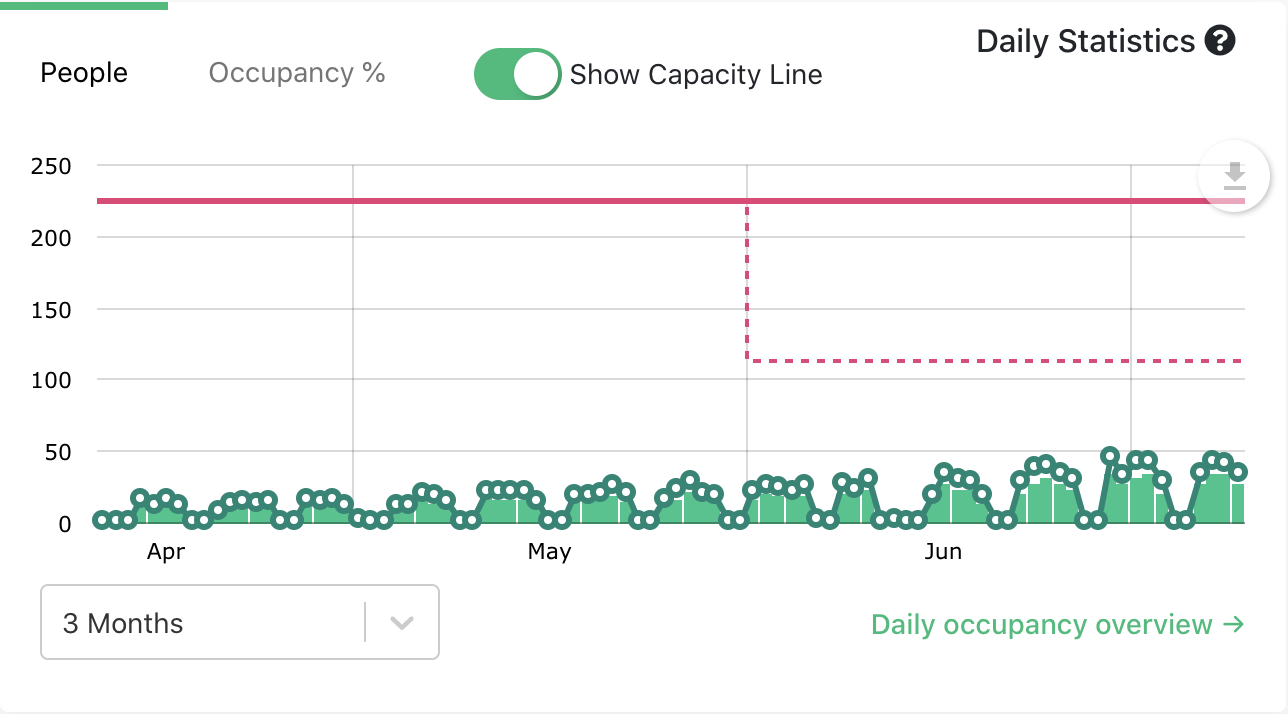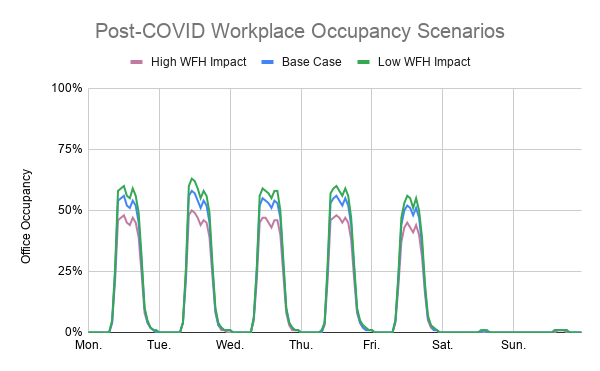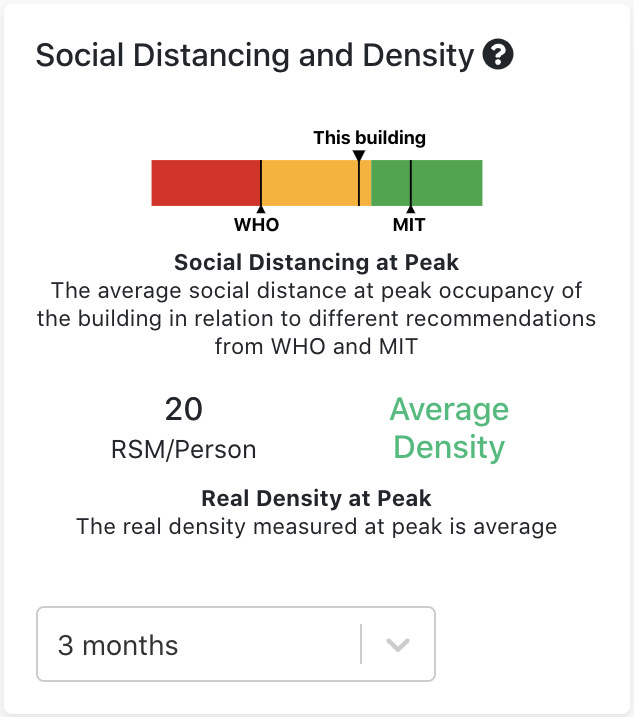Facilitate a More Dynamic Workplace with Mobility Personas
With the stabilization of the new normal that emerged from the pandemic, the future of work is now unmistakably hybrid and dynamic. Organizational priorities are evolving from a location-first approach to one focused on productivity and outcomes. Workplace managers are tasked with reconfiguring offices to align with new policies and foster collaboration across departments and sites.
A new way of working requires a new way of measuring work, occupancy data that goes beyond badges and bodies to offer a more cohesive picture of employee utilization and behavior. Consultants and in-depth surveys can help organizations orient by clusters or personas, but these options are often cost-prohibitive and reflect only a moment in time. The breakneck pace of change since 2019 has stressed the need for teams to be responsive and adaptive and do it at scale.
With the launch of Basking’s Mobility Personas Analysis, users can understand how people are experiencing the workplace. Featuring an automated persona assessment that can be implemented at scale very quickly, the analysis describes how employees use the office space in the hybrid environment.
Introducing Mobility Personas
Mobility Personas are a powerful way to understand the population in an office space. They are used to classify people based on their consistent mobility patterns when visiting an office, namely the Duration of Visits and the Frequency of Visits.
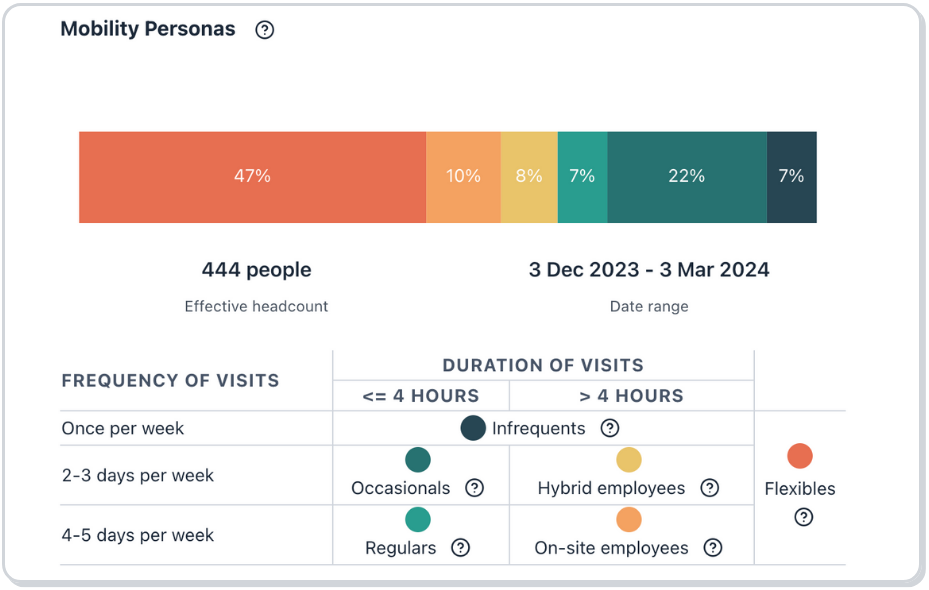
By measuring what’s really happening and presenting the data in an easily accessible analysis, the profiles help teams better understand the variations and personas within their organization and can optimize based on actionable, real-time data.
Understanding Mobility Personas
There are six categories of personas tracked in the Basking dashboard:
- Occasional – people visiting the office occasionally and for short visits
- Short durations (4 hours or less)
- Occasional visits (2-3 days per week)
- Regular – also visit for short durations, but differ from occasional in the fact that they visit more regularly
- Short durations (4 hours or less)
- Frequent visits (4-5 days per week)
- Hybrid – visit for 2-3 days per week and more than four hours
- Long durations (4 hours or more)
- Occasional visits (2-3 days per week)
- On-site – visit the office frequently and for more than four hours
- Long durations (4 hours or more)
- Visits frequently (4-5 days per week)
- Flexibles – does not follow a certain mobility pattern consistently; behaves in different ways over time
- None of the mobility profiles exhibited is significantly more relevant than the others
- Infrequents – visit the site only rarely, about once per week
- Short or long durations visits
- Rare visits (~once per week)
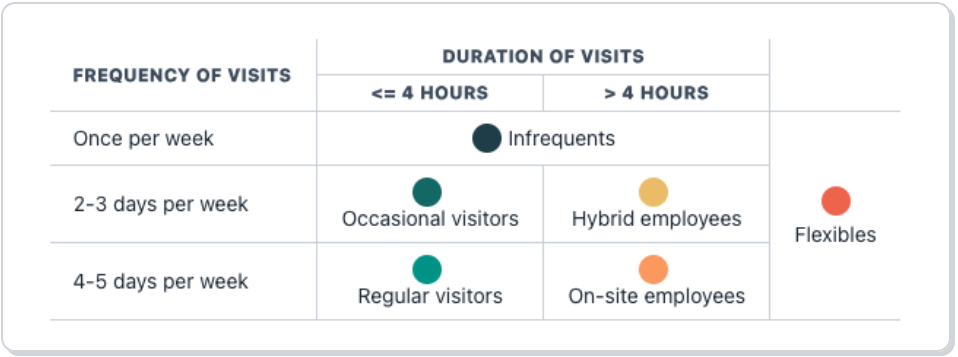
Why are Mobility Personas Important?
Mobility Profiles are important for real estate and workplace teams as they offer a better understanding of how people use their space.
Suppose a site has more than 60% of people classified as Infrequents, that is, visiting the site only once a week. In that case, the action items for optimization would be different compared to sites where Flexibles are the majority.
Mobility Profiles help customers identify unseen patterns for more informed decisions, not just for cost savings but also for RTO and Employee Experience. It provides a deep dive into the behavior of people over a long period that cannot be realized by just looking at daily occupancy, doing manual counts, or with anecdotal evidence.
These personas can help to better define challenges and solutions, as well as applicable percentages across employees. The user-friendly format of the analysis can be used to engage stakeholders across the business and build consensus around shared goals.
Mobility Personas are based on long-term analysis of the frequency of visits and duration of visits. Basking categorizes only individuals visiting the office for a minimum of 4 weeks within a period of 3 months, and uncategorized visitors are not represented in the mobility personas graph. The analysis is calculated every week using the data of the previous three months to ensure organizations always have an accurate picture at their fingertips.
Bonus Feature: Effective Headcount
One of the most well-received features among early users is the idea of Effective Headcount. Traditionally, companies allocate a certain amount of employees to a site. This value is usually static or changes very slowly over time following staff fluctuations.
In contrast, the Effective Headcount is not static but rather depends on how people use the space and represents the number of employees that regularly visit the office. To be counted as Effective Headcount, an employee needs to visit the office at least four different weeks over a period of three consecutive months. It does not matter how frequent and how short the visits were during those four weeks.
A simple comparison of Effective Headcount and standard or static headcount quickly provides a touchpoint for the share of employees actually utilizing the office. With a baseline in place, organizations can more effectively focus on optimization and alignment of their existing spaces or identify the requirements for their next space.

Sign up for a free demo account to see how Mobility Personas work, and let us know if you’re ready to learn more or get started building yours today!



